Every place on the face of this Earth, over which the mankind has ever dwelled has a tale to tell. As the civilization formed and evolved over the millions of years on Earth, countless and diversified activities of humankind created some fabulous history all along.
In the course of creating this history, the sites where these events occurred also gained significance and correspondingly overtime, began to be identified with those very events, contexts and personages involved.
Since generations, mankind has been aware of such places, which in their unique way, evoke awe, amazement and mystery with the some of the most astonishing tales associated with them, taking one into a world of wonder and fantasy.
After visiting any place of interest, the most obvious questions that arise are ‘what’, ‘why’ and ‘who’ of these sites. In other words, we all aspire to know the story behind that place which makes it popular or draws hundreds of tourists to its threshold.
Some of these tales are pretty obvious and plain and does not invoke any emotion while some tales generates a keen curiosity, inspiration and fascination.
In this blog we bring you 10 important places in India with most interesting tales behind them that will inspire a sense of excitement, revealing some known and unknown aspects of these places, delivering you surprising facts and hidden secrets that were hitherto unfamiliar with the masses and concealed behind the outer allure of these spots. Have a look:
1. Qutub Minar, Delhi :

Centered in the heart of Delhi, The Qutub Minar is a tall, architecturally beautiful and historically one of the most significant monuments in India. The Minar or Qutub complex per se has a tremendous importance in the sense that it was from here that history of India completely changed and entered into its medieval Islamic phase that altered the course of the country’s destiny and future for all times to come.
The Qutub Minar, although one of the largest minarets in India made from the rubble of sandstone, essentially signifies the triumph of Islam over Northern India. After the victory of the forces of Mohammed Ghori by his able general Qutubuddin Aibak, over the last Hindu Kingdom of Northern India-the Chauhans- the foundation of Delhi Sultante was laid.
To commemorate the spectacular feat, Qutubuddin Aibak commissioned the construction of Qutub Minar, which would symbolize the victory. The famous Lal Kot area of the compound was attacked and approximately 27 Hindu and Jain Temples were destroyed and their icons defaced to construct the giant Quwwat-Ul-Islam mosque.
The construction of the Minar was started in 1199 A.D. However, only the first storey of the minaret could be constructed when Qutubuddin Aibak died in an accident, falling from his horse, while playing polo.
His successor Iltutmash was a kind ruler and thereafter he finished three more stories of the tower. But in the year 1369, a powerful lightning struck Qutub Minar, destroying it completely.
After this unfortunate incident, the restoration work was carried out by Sultan Firuz Shah Tuqhlaq who added two more stories to it.
The Minar now has 5 stories, each with its own unique design. Being a major tourist spot, it attracts approximately 3.9 million people every year.
In later part of the Delhi Sultunate, more structures were added to the Qutub Complex including Sultan Alauddin Khilji’s Tomb and a madrasa, The Alai Darwaza, Tomb of Iltutmish, Alai Minar. The Iron pillar, which however also being the part of the complex is an earlier structure.
[ Read more about the 21 stunning architectural marvels in india ]
2. Fatehpur Sikri, Agra :

The Mughal tradition made it incumbent for Emperors to make their own capital as a memory or an icon that characterizes their own individual personality and tastes and outlook towards life.
Babur and Humayun did not have sufficient time and resources to cast their ideas and tastes in the form of physical structures like buildings and citadels that could be associated with their own personal preferences and thoughts.
However, the citadel of Fatehpur Sikri is associated with Emperor Akbar, who after having established himself firmly on the throne of Hindustan, had the time, energy, resources and stamina to build his own city according to his own choice and preferences.
However, the story behind Fatehpur is an interesting one that so clearly showcases the human side behind the majestic aura, visage and legends of the mighty Mughal Emperors, who ruled one of most opulent, powerful and largest empires of the world.
It is said that Emperor Akbar, after conquering Hindustan wanted a heir and successor to continue the race of Mughals after him but he was so far unsuccessful in this endeavor. His two infant sons, Hassan and Hussain had died in the infancy.
This honest wish turned into a desperation for the Emperor as he seek the divine intervention of holy men and sages to bless him so that his prayers could be answered. Then, finally he decided to go to the doorstep of Sufi Saint Sheikh Salim Chisti, who used to live in a hermitage, on a small hill, outside the city of Agra, in the village of Sikri.
After paying him several visits, he finally went to the hospice, covering the entire distance from Agra to Sikri on foot. The Sheikh assured him that his prayers would be answered. In the due time, his Rajput Wife, Jodha, gave birth to his first surviving son, Salim, whose arrival was celebrated throughout the empire with great pomp and show.
In gratitude, Akbar decided to make an entire city around the hospice of the Sheikh and named the young boy Salim (the future Emperor Jahangir) after him. The city was meticulously planned and built according the ideas of the Emperor and using Red Sandstone from the local area.
It was named Fatehpur. It was bounded on the three sides by thick sandstone walls and on the fourth side was a lake, which was the only water source of the town. Unfortunately, Akbar soon lost interest in the city, partly due to the extreme weather of the area and partly due to the problem of water shortage.
Finally once when the royal family was watching a performance on the banks of the lake, the embankment burst out, flooding the entire city. This was the final nail in the coffin. Akbar soon left Agra for Lahore, to oversee his Kashmir operations and the city fell into ruin and became a Ghost Town.
Akbar only visited Fatehpur once more, towards the end of his life, while on his way to Agra. Today it stands as a major symbol of Mughal Glory and one of the most visited tourist destinations in India. Most of the structures remain intact and reminds of a wonderful period of architecture that was once effervescent in the country.
3. Harmandir Sahib (Golden Temple), Amritsar, Punjab :

The Harmandir Sahib or the Golden Temple is the most sacred site of Sikhism and a focus of Sikh Pilgrimage from around the World.
A large complex with a tank, it is visited by thousands of devotees and tourists every year to pay homage and seek blessings of the God in the peaceful and serene ambience of this amazing area.
However, story of its foundation and its building is all too amazing that symbolizes the beautiful tradition of religious tolerance and inter-religious harmony that is so familiar to India and characterizes the spirit of the religion itself.
According to the most versions of the story, the land for the construction of Golden Temple was donated by Mughal Emperor Akbar, who was impressed by the philosophy and charity work of Guru Amardas.
Beginning with the idea of focal point for Sikhs, Guru Amardas instructed Guru Ramdas to dig out a tank, which would be a site for Sikh worship and bathing in which, would allow the devotee to gain spiritual and temporal merit. Thereafter, Guru Ramdas purchased some additional land, around the area to start construction for the Temple.
Setting up a brilliant example of inter-communal harmony Guru Arjun Dev, Son and Successor of Guru Ramdas invited a Muslim Saint, Mian Mir, to lay the first stone of the foundation of the Golden Temple, signifying that the gates of the temple are open to people of all religions, whosoever wanted to come and seek the blessings and guidance from the place.
Moreover, Guru Arjun also made significant departures from the traditional ways of temple construction, introducing many changes in its basic plan and supervised all the work himself. The architecture of the temple exhibits a unique harmony between Hindu and Muslim styles.
The construction of the temple was finished in the year 1604 when Guru Arjun installed Guru Granth Sahib in the temple as the 11th Guru and appointed Baba Budha as its first reader. The temple was however sacked briefly by the Afghans but it was retaken and rebuilt during 1760s.
Today the site is a busy place with pilgrims, devotees and volunteers, all participating to manage the human traffic and other affairs and atmosphere around the place is just incredible.
4. Taj Mahal, Agra :

The story of Taj Mahal is all too well known. However the more one reads about it, the more it enthralls and evokes the nostalgic charm of an era, which is often titled as the “Golden Era of the Mughal History in India”.
The country was virtually secured and the reign was peaceful for the Mughals under the Emperor Jahangir, who, in a close companionship of his Iranian queen Nur Jahan and her family, was running the affairs of the government efficiently and smoothly.
At this time, in the year 1607, Jahangir’s third son Prince Khurram (the future Shah Jehan) was betrothed to Arjumand Bano, who was the daughter of Nur Jahan’s brother Asaf Khan. They were, however, married formally four years later in 1612.
Since the time the two were married, she became her constant companion, a refuge for his emotions and a close confidante of all his secrets. She used to join him on all his campaigns and he depended heavily on her.
The two were bonded into an unbreakable bond. She bore him all the children he needed and he, on his side, smothered her with all the love and prestige that he could bestow.
In due course, Prince Khurram succeeded his father to become Emperor Shah Jehan and Arjumand (now Mumtaz Mahal) became the chief queen of the empire.
However, just four years into her career as the queen in 1631, Mumtaz Mahal died, after a 36 hour long labor, giving birth to their fourteenth child, Gauharara Begum. Shah Jehan was deeply saddened and shocked and his grief knew no bounds.
Thereafter, he became more and more inaccessible and isolated and thus, in 1632 he commissioned a tomb for his favorite wife, which would surpass all the buildings in the world, in terms of its beauty, majesty and architecture and which would give a befitting honor to the Royal Queen and a tribute to his love.
It is believed that Shah Jehan had planned a black Taj, just opposite the present one as his own final resting place, but the lack of funds prevented that.
After a tragic imprisonment in his last years by his own son and successor Aurangzeb, he died a lonely death and was buried beside Mumtaz in the same building.
Today this monument is the center of Golden Triangle Tourism in India and one of the Seven Wonders of the World to which thousands of tourists across the globe come to see, experience and be mesmerized.
[ Check-out about the splendor of Taj mahal or plan for a trip to golden triangle ]
5. Gwalior Fort, Madhya Pradesh :

The massive fortifications and walls of the majestic forts and palaces of India are a sight to behold. They are an insignia of India’s bygone royalty, authority and affluence.
Nevertheless, behind the curtain of all the pomp and show are stories of rivalry, jealousy, secrets and intrigue that only few know or are able to comprehend.
One such story is the one associated with the Gwalior Fort that hides in its bosom the mystery of an incredible wealth that got involved in it, three generations and a number of questions, searches, revelations and reports.
The story in question was penned down by British Author M.M Kaye, whose father Sir Cecil Kaye was a close friend and confidante of Madhav Rao Scindia, who was the grandfather of Vasudhra Raje Scindia, Yashodhara Raje and MadavRao Scindia. In 1843, the throne of the palace was in the hands of Jayaji Rao Scindia.
At that time, the Scindia’s were the virtual rulers of North India and the palace complex was used as an armory and treasury to store the incredible wealth due to the lack of any banks or similar institutions.
This wealth was kept in secret stores or vaults which opened only with the help of a code called “beejak” that only the ruling Maharaja Knew and would pass on to his son upon succession. However, the Maharaja Jayaji Rao Scindia died without transferring the code to his son, who was at that time was only a small boy.
The Royal Family was in a fix as the fabulous wealth of the kingdom was also lost without a trace with the death of the Maharaja. However, the British Resident of the State, Colonel Bannerman offered help which the family accepted and with his efforts, several chambers and secret vaults were discovered that yielded a total wealth of approximately 62 million rupees.
However, still it was clear that there were many other cells and chambers, hidden without the knowledge of the Royal Family.
When the Royal Prince Madhav Rao came of age, he began fresh searches for the wealth but without any success.
Once while on a hunt, he came across an old astrologer, who promised him the path to the secret wealth, provided that the Maharaja accompany the astrologer to the fort blindfolded and unarmed, to which the Maharaja agreed, but still carried a lead staff as a precaution. The astrologer took the Maharaja into unknown corners of the fort.
As the two were descending the steps of a secret vault, the Maharaja, hearing the echoes of his own steps, assumed the presence of a third person.
Fearing an assassination attempt, he took out the lead staff and hit the astrologer, who died on the spot. The Maharaja then ran back to the safety of his waiting soldiers outside.
However, he soon realized his mistake, but the only source of the knowledge of the wealth was lost forever. However, the maharaja still resolved to find his wealth, no matter how much more time and effort it might take.
Moving many years about many uncharted and mysterious corners and paths, he was about to slip once.
In order to regain his balance, he took the support of a pillar and by that accident was revealed a secret chamber within that pillar.
He called on his soldiers for help and with extensive searches was able to unearth a wealth of about 20 million silver coins and 2 million worth of Sterling which improved the financial condition of the Maharaja considerably.
Thus exhausted with this exercise of searching, the Maharaja converted all his wealth into liquid assets and decided to invest into corporate sector, which he later did with struggling enterprise of Tata Steel. The Royal Family now owns a significant number of assets and shares of the same organization.
[ Plan your trip to explore the stunning forts & palaces of India ]
6. Tughlaqabad Fort, Delhi :
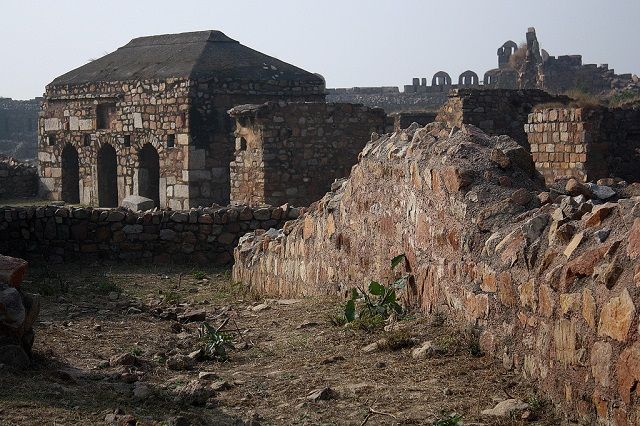
The Tughlaqabad fort is one of the most majestic and splendid icons of Delhi that stands as symbol of imperial glory, power and prestige of Sultan Ghiyasuddin Tughlaq, who was the first ruler of the Tughlaq dynasty of the mighty and dominant Delhi Sultanate.
Although now in an advanced stage of ruin, the fort was once the obsession of the Sultan who endeavored the grandest city for himself, laid with golden bricks, massive battlements and imposing walls.
However, what followed was one of the greatest tragedies of history that still invokes disbelief, marvel and inspiration from people. It is said that Sultan Ghiyasuddin was quite unpopular with the Muslim nobles of his empire.
Though generally liberal towards non-muslims, he unfortunately went in to a tussle with Sheikh Nizamuddin Auliya, who was the leading Sufi Saint of the area and had a large following of both Hindu and Muslim followers.
However, in 1324 the Sultan turned his attention towards Bengal that was at this time in a state of civil war. After conquering Bengal, he put Nasiruddin Mohammed on the throne of province and after that conquered East Bengal as well.
While returning to Delhi he also captured North Bihar. However, when he was just outside the city of Delhi, he sent advance orders to shut down the hospice of Sheikh Nizamuddin.
The Sheikh however advised the darogha (inspector in-charge, who came in to execute the orders) to wait and on his appeal that Sultan would punish him, the Sheikh proclaimed “Hunooz Dilli Door Aest” which in Persian means-Delhi is still far off.
The prophecy turned out to be true as when the Sultan was about to enter Delhi a massive wooden pavilion, set up to welcome him collapsed, crushing him and his second son Prince Mahmud. It never became clear that whether it was an accident or a carefully executed plot but the words of the Saint were nevertheless proved.
After this, the city of Tughlaqabad, which the emperor so eagerly constructed, fell into ruins as his son and successor chose another citadel as his residence.
Tughlaqabad became home of wild beasts, insects and bats and a pasture ground for local shepherds. It was soon enveloped in wild vegetation and became a ghost town.
[ If Interested? Check-out the list of monument in and around Delhi ]
7. Kuldhara Village, Rajasthan :
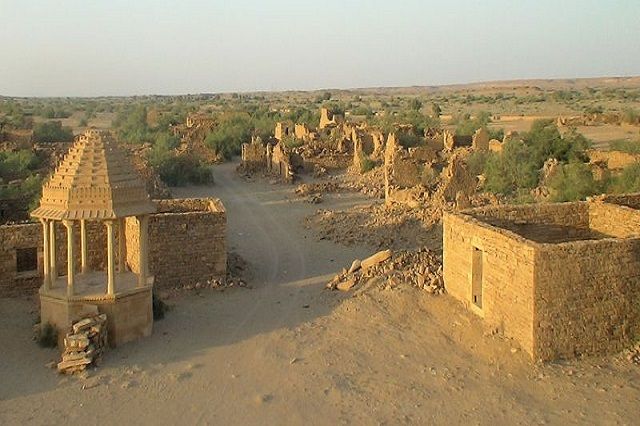
The story of Kuldhara is one of weirdest that has evaded any rational explanation ever since the incidence associated with it occurred, way back in 1825.
It was a large, prosperous village, located about 15 km west of Jaisalmer, which comprised in its vicinity some 84 more villages, based with a proper planning- straight and wide streets, grid network, temples, step walls and other signs of development.
It was established by the Paliwal Brahmin community in 1291, who were one of the wealthiest and most affluent of all the inhabitants of the area and were especially known for their plantation skills and business acumen.
But one night in 1825, all the people, including the dwellers of all the 84 villages vanished in the dark, without a single person leaving behind, after living in the area for generations for nearly 7 centuries.
The tale behind such a mass exodus goes like this: The minister in the kingdom ruling at that time saw the young daughter of the village chief and wanted to marry her.
He forced a 24-hour ultimatum on them to either marry the girl to him or he will forcefully enter the village and take the girl off. For saving the pride and honor of their daughter that the heads of all the 84 villages met and decided to abandon the area.
Up to this, it is understandable, however, the fact that all the inhabitants were able to flee without a trace in just few hours of night or no one saw them leaving and there was no evidence of where did they actually go, is beyond comprehension.
Moreover, it is believed that as they went, the villagers cursed the area that would bring death to anyone who try to inhabit the village after them. This can be argued from almost untouched structures that have been left behind, although most of it is now in ruins.
The site is now maintained as a heritage spot by the government and is one of the tourist destinations. The backdrop of the area looks like a ghost town which attract many travelers to the place.
[ If Interested? Check-out the list of Rajasthan tour packages ]
8. Lonar Crater Lake, Maharashtra :
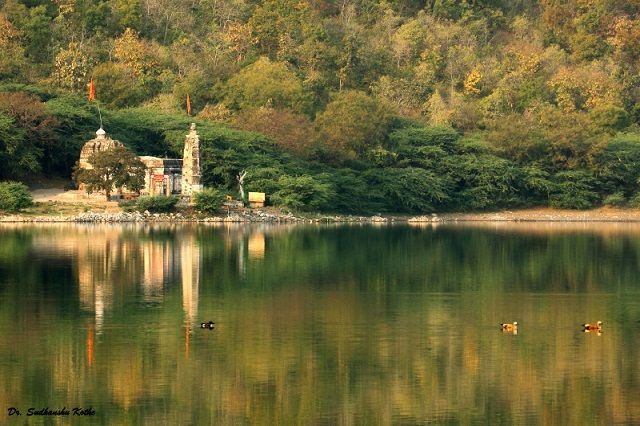
Located at about 4 hours’ drive from Aurangabad is one of Maharashtra’s best kept secrets about which few people know and out of them, only a few venture to the area.
Spread in a vast 1.5 km diameter expanse, the Lonar Lake was created as a result of Geological History’s only high velocity impact meteorite, that formed a deep crater about 150m deep in the basaltic rock of the area.
Approximately 52,000 years, a high speed meteor, weighing about 2 million tones and travelling with a speed of 90,000 kmph, hit the earth with a tremendous force. Later on, the area got infested with a primeval jungle and a perennial stream nearby supplied the water to the lake thus formed.
However, what truly surprises the scientists, people and tourists alike is that the water of the lake is both salty and alkaline which is one of the most bizarre phenomenon anywhere found on Earth. It is for this reason as well that local people regard the lake as holy. But the fact truly baffles everyone.
Moreover, at some areas inside and around the lake, the magnetic compass stop working which is another of the unexplained fact about the place. Why such a thing happens isn’t anybody’s guess and it really screws up the brains of scientists.
The lake is home to some of the rarest and most exotic species of micro-organisms not found anywhere else on Earth. Around the lake, one finds an array of ancient temple and folklore sites, each with their own legends.
The forest area around the temple is home to some of most amazing species of birds (local as well as migratory), seemingly a wealth for bird watcher and ornithologists.
Besides there are other species of animals like langur, bats, barking deers, chinkara and also reptiles like snakes, scorpions, monitor lizard and other colored insects, amphibians.
9. Jatinga, Assam :
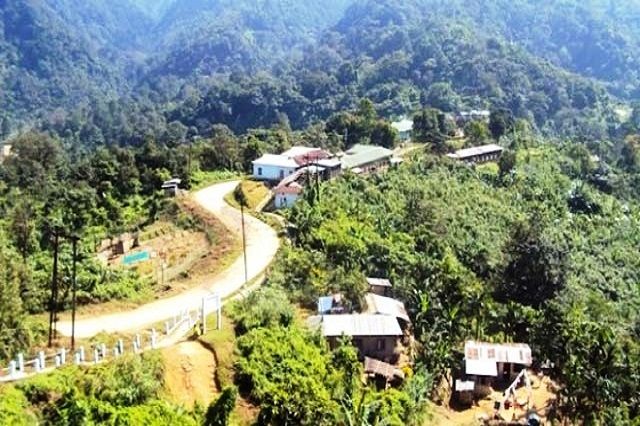
Jatinga is a seemingly little known, isolated village with verdant, lush green cover and surrounded by beautiful, serene mountains. Physically, it has nothing special and is like any other village of India’s picturesque and scenic North East.
However, that’s not where its actual catch lies. The village is associated one of the most mysterious phenomena that baffles everyone, even scientists who comes to know about it. And this phenomena takes place every year, with same intensity and circumstances.
This phenomena is the most amazing occurrence of “Bird Suicide” that happens here every winter with a number of species dying and perishing between the months of September and November, juts after sunset.
Mysteriously between 7 pm and 10 pm, a large number of birds descend from the sky, falling to their deaths, violently crashing into buildings and trees. This has been most surprising for locals as birds are not known to suicidal species.
Most villagers explain this as the presence of evil spirits in the sky that are responsible for this startling case. Recently there have been some explanations as some scientists have come forward with the theory that due to intense fog high up in the skies, the birds gets dazed and then they fly towards the shining light of buildings, in the event of which they collide with trees and buildings and either gets killed or seriously injured.
However, this description notwithstanding there are still many unanswered questions and doubts that have even puzzled known and celebrated ornithologists like Salim Ali. The fact that almost all of the birds come from North and moves into a definite 1.5 km long and 200 meters wide stretch, while the southern lights fails to attract them is astonishing. Moreover, as Dr. Salim Ali puts it, most of these species belong to diurnal resident birds and ideally should not be moving at night.
But nevertheless the birds have put the village of Jatinga on the world map and there has been a tremendous surge in the tourism of the area, especially in the monsoons.
Looking at the potential to attract tourists, the local government has organized a festival called Jatinga Festival revolving around these birds in which their meat is served and been expressed by many as to be quite delicious.
Now the locals deliberately switch on lights to catch these birds as most of them are quite popular as eatables in the local area.
10. Vittala Temple Complex, Hampi, Karnataka :
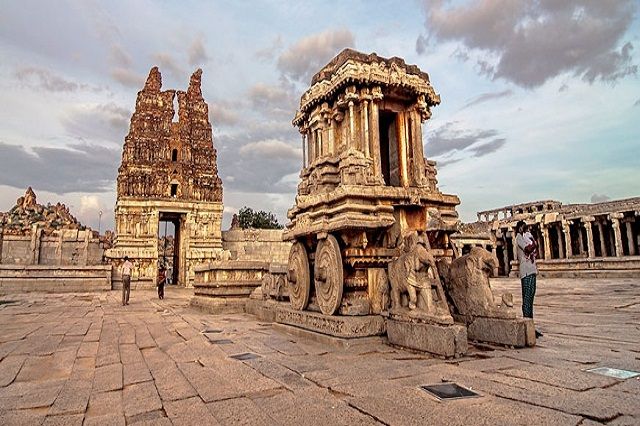
A group of some of the most exotic and architecturally beautiful buildings and structures, The Hampi Compound is known throughout the world as a brilliant symbol of India’s Early Medieval architectural legacy and skill.
With finely carved complexes and temples, it showcases a wonderful tradition and exhibits the richness and cultural affluence of the Vijayanagara city, within the ruins of which the Hampi complex is located.
Of the several buildings that make up the complex, The Vittala Temple compound is one of the most elegant and architecturally astonishing structure that attracts tourists from across the world.
The most remarkable fact about this complex, which places it apart from other exquisite buildings in the area is the group of 56 pillars which produce fine musical sound when tapped gently.
The British were so bewildered by the fact and their experience that they actually cut a pillar into two, to see if there is something that lies within. These “half” pillars could still be seen in the vicinity.
However, over the period of time, due to repeated tapping by people thronging to the site, the pillars underwent significant damage, due to which tapping has been forbidden but still it remains an unsolved mystery as to how the music is generated within the pillars. The curious phenomena alone attracts hundreds of tourists alone to the site ever year.




This is truly useful, thanks.
some info is very intresting nd knowledgeable but less data you provided anyways overall very nice article you have posted.
Thanks Arjun! Do keep up with the latest posts! 🙂